Ubuntu18.04 system installation and prerequisite software installation guide
Introduction
This weekend was relatively idle, so I decided to reinstall the system on my old laptop at home. Because I plan to use this computer to write code (also because the configuration of this computer is outdated, it will be slower to install win10), so I installed Ubuntu 18.04.
final effect

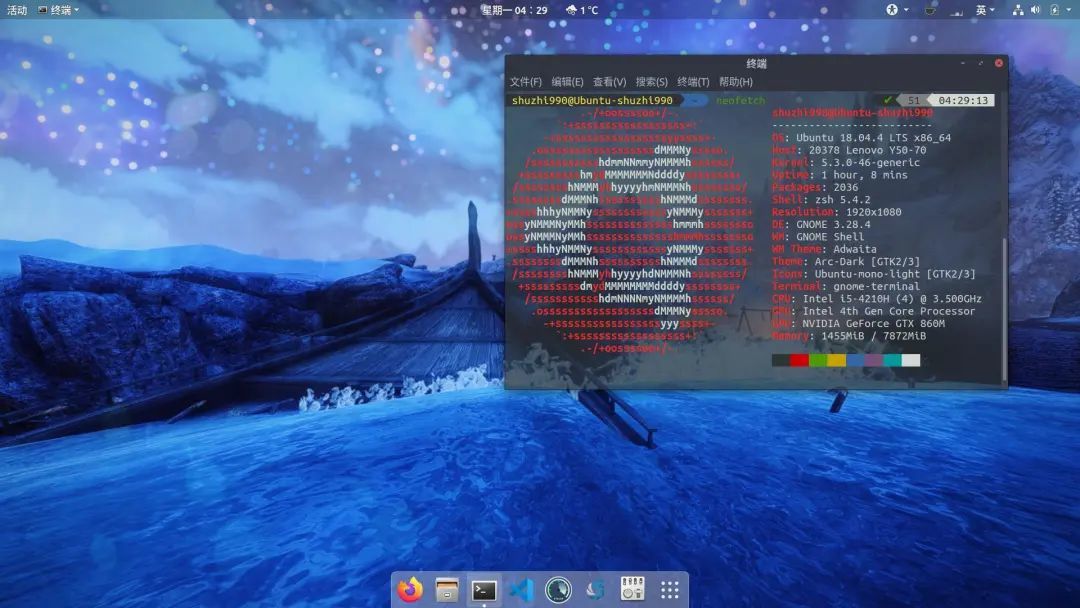
Article Directory
- Make a bootable USB flash drive
- Set startup items
- install the system
- install software
Make a bootable USB flash drive
Download mirror
- Download mirror
Download from official website (slower)
https://www.ubuntu.com/download
China official website download
https://cn.ubuntu.com/
Tsinghua University mirror station download
https://mirrors.tuna.tsinghua.edu.cn/ubuntu-releases/18.04/
- Download rufuns boot disk creation software.
Download from official website (slower)
https://rufus.ie/
Public account thumb notes backstage reply rufuns get
Make a bootable USB flash drive
Double click to run rufuns directly. Set partition type MBR, file system FAT32, cluster size 8192 bytes. (Pictured)
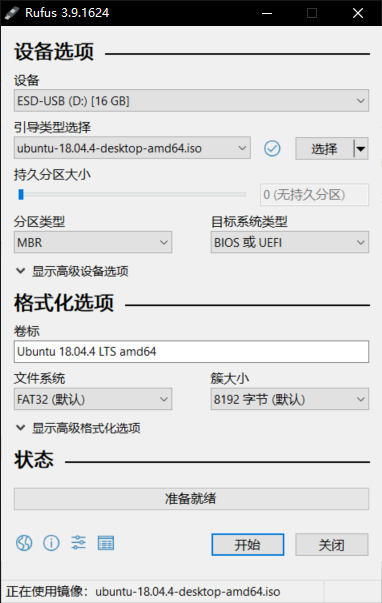
Click Start to make a boot disk. When the status progress bar is full, click Close, and the boot disk creation is complete.
Set startup items
First, turn off the quick startup under the win system. Turning on the quick startup may cause the U disk not to be recognized.
Turn off method: Control Panel--->Hardware and Sound--->Power Options--->Select the function of the power button--->Change the currently unavailable settings--->Turn off the quick start


Then turn off the computer, insert the U disk, and quickly press F2 when booting (different computers have different keys to enter the BIOS, most of which are F2 for Lenovo) to enter the BIOS settings.
After entering the BIOS settings, switch to the third tab Security (security options), and set Secure Boot to Disabled. Then find boot-USB boot-Enable to enable USB device boot. F10 to save and exit.
After the setting is complete, restart the computer, press and hold F12 to enter the Boot Manager when booting, and select the U disk to start.
Then enter the interface below and select Install Ubuntu.

First make some basic settings
(1) Set language (Simplified Chinese is the third from last)
(2) Keyboard layout (Chinese)
(3) Wireless network (just find and connect to your network)
(4) Update options (I am a single Ubuntu system, so I use normal installation)
(5) Installation type (other options, manual partitioning)
(6) Zoning plan (for reference)
| Mount point | type | location | used | size |
|---|---|---|---|---|
| Primary partition | Start position | Swap space | Same as your physical memory | |
| /boot | Logical partition | Start position | Ext4 | 500MB |
| /usr | Logical partition | Start position | Ext4 | 100G |
| /home | Logical partition | Start position | Ext4 | Free space-500MB |
| / | Main partition | Start position | Ext4 | 100G |
| Logical Partition | Starting Position | EFI System Partition | 500MB |
(7) Select the time zone (click on the time zone location)
(8) Create user name
(9) Install the system software (this step is the longest time-consuming, just wait patiently)
The dialog box that pops up after the installation is successful.
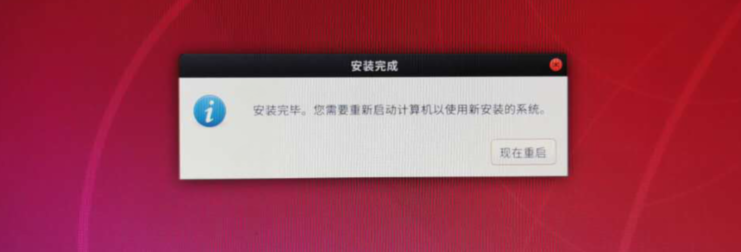
So far, the Ubuntu system has been successfully installed on your computer. Now start to install some necessary software.
Install software---tools
Modify the software source before starting to install the software, otherwise the download speed will be too slow.
First open the Software and Update application
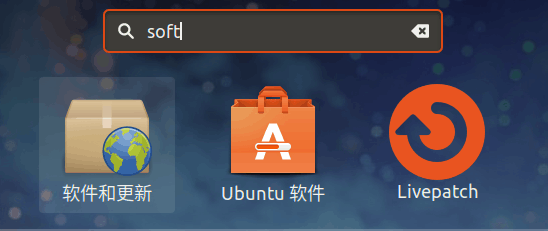
Click Download from
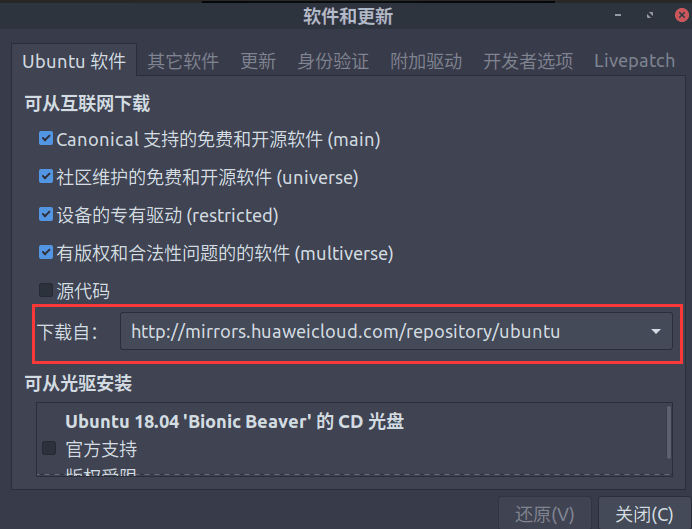
Then click Select the best server, wait a while, the system will automatically select the best server, click Select Server to complete the configuration.
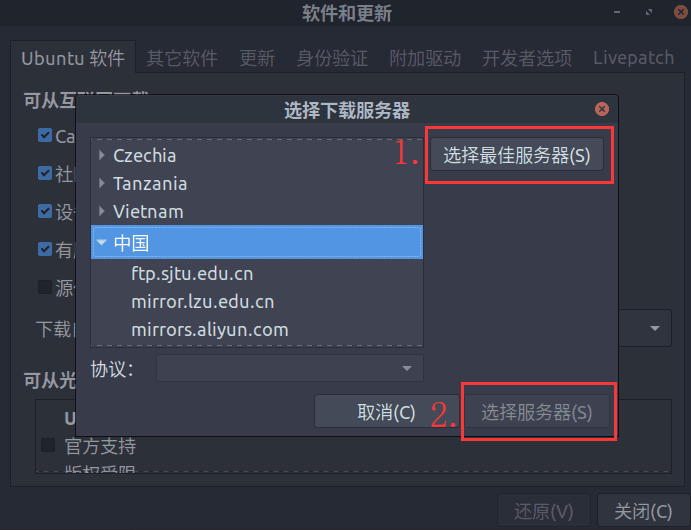
Now start to install the software.
- shutter
A very easy to use screenshot software.
installation method:
sudo apt-get install shutter
- simplescreenrecoder
The useful screen recording software, the video recorded by kazam cannot be opened in Win10.
installation method:
sudo apt-get install simplescreenrecorder
- CopyQ
Clipboard management tool, lightweight and can be viewed in the status bar in the upper right corner.
installation method:
sudo add-apt-repository ppa:hluk/copyq
sudo apt-get update
sudo apt-get install copyq
- Caffine
It prevents the system from automatically closing the screen, which is very convenient to use. The upper right corner can be opened directly.
installation method:
sudo add-apt-repository ppa:hluk/copyq
sudo apt-get update
sudo apt-get install copyq
- Neofetch
A tool for viewing system status, a must for Ubuntu.
installation method:
sudo add-apt-repository ppa:dawidd0811/neofetch
sudo apt-get update
sudo apt-get install neofetch
Install Windows Common Software
Compared with the software that can be installed by the above one-line command, installing the software on Windows is relatively troublesome. Divided into the following three steps.
- Install git
- Install deepin-wine environment
- Install the required software containers
Install git: Enter the following commands in the terminal to install git.
sudo apt-get update
sudo apt-get upgrade
sudo apt-get install git
Then use the following command to install the deepin-wine environment.
git clone https://gitee.com/wszqkzqk/deepin-wine-for-ubuntu.git
After installing the deepin-wine environment, go to the website below to download the .deb file of the required software.
QQ:http://mirrors.aliyun.com/deepin/pool/non-free/d/deepin.com.qq.im/
WeChat: http://mirrors.aliyun.com/deepin/pool/non-free/d/deepin.com.wechat/
Baidu network disk: http://mirrors.aliyun.com/deepin/pool/non-free/d/deepin.com.baidu.pan/
Finally, cd to the download directory and execute the installation command.
Tim:
sudo dpkg -i deepin.com.qq.office_2.0.0deepin4_i386.deb
Baidu Netdisk:
sudo dpkg -i deepin.com.baidu.pan_5.7.3deepin0_i386.deb
At last
This article introduces the detailed process of installing Ubuntu 18.04 system and installing some common software.
If you think this article is okay, please take a look at it.
Recommended Posts